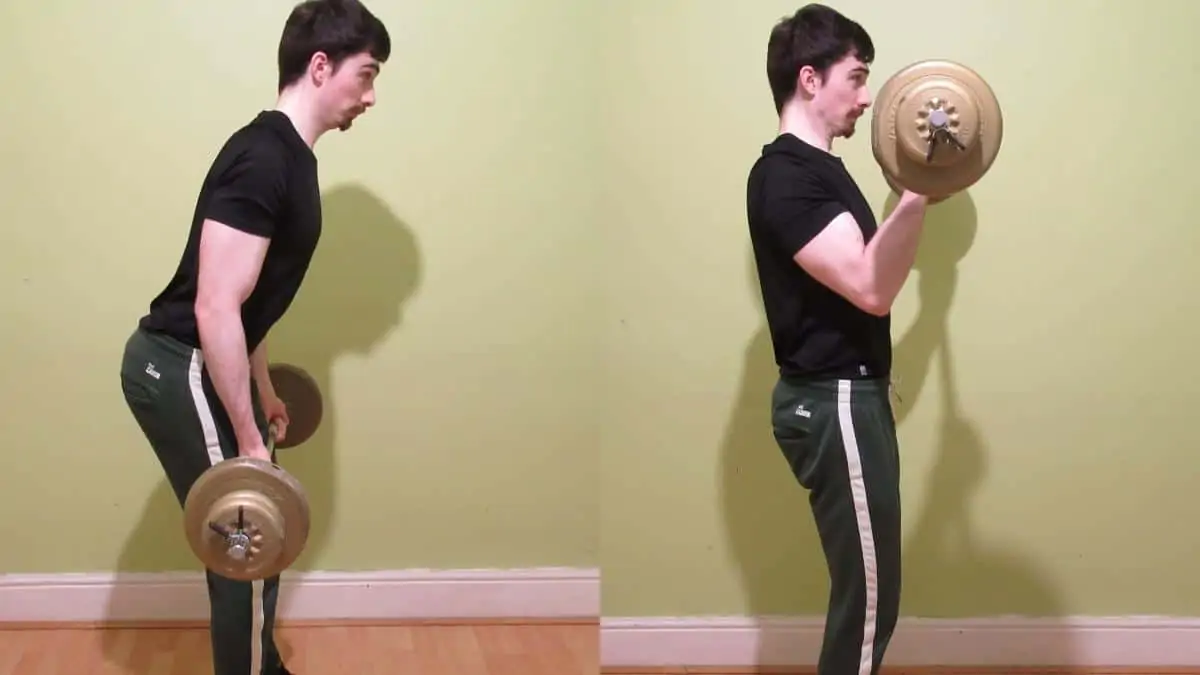Barbell cheat curls overload the bicep muscles with momentum provided by your hips. This enables you to overcome the sticking point and lift significantly more resistance, which you may want to do for hypertrophy purposes and/or as a test of bicep strength.
The barbell cheat curl is the opposite of the proper bicep barbell curl, where you use strict form, because you can essentially do whatever it takes to heave the weight up. However, just because you can do cheat curls doesn’t mean that you should.
As you’ll soon learn, despite the benefits of the exercise, there are also some significant drawbacks to cheat curls that you need to be aware of.
Barbell cheat curl exercise details
- Also Known As: Arnold cheat curls, straight bar cheat curls
- Main Muscles: Biceps brachii
- Secondary Muscles: Brachioradialis, brachialis, forearm flexors
- Exercise Type: Strength
- Exercise Mechanics: Isolation
- Difficulty Level: Intermediate
- Equipment Needed: Barbell, weight discs
How to do proper cheat curls
- Load an appropriate amount of weight onto a barbell.
- Grab the bar with a shoulder-width underhand grip and stand up straight.
- Push your hips back and then thrust them forward as you curl the bar toward your chest.
- Contract your biceps at the top of the rep and then lower the weight slowly over a 3-5 second duration until your elbows reach full extension.
- Repeat for 3-5 sets of 4-8 reps.
Try not to lean back at the top of the cheat curl rep by hyperextending your spine. You’re getting plenty of assistance from your hips as it is, so if you still can’t lift the bar without leaning back, then the weight is most likely too heavy for you (or your biceps are too fatigued), and you should lighten the load.
Cheat curl variations
There are three main types of cheating bicep curls that you can do to test your strength and build your arms. Each has its pros and cons, which we’ve discussed in detail below.
Related Exercise: Barbell power curl
Hammer cheat curl
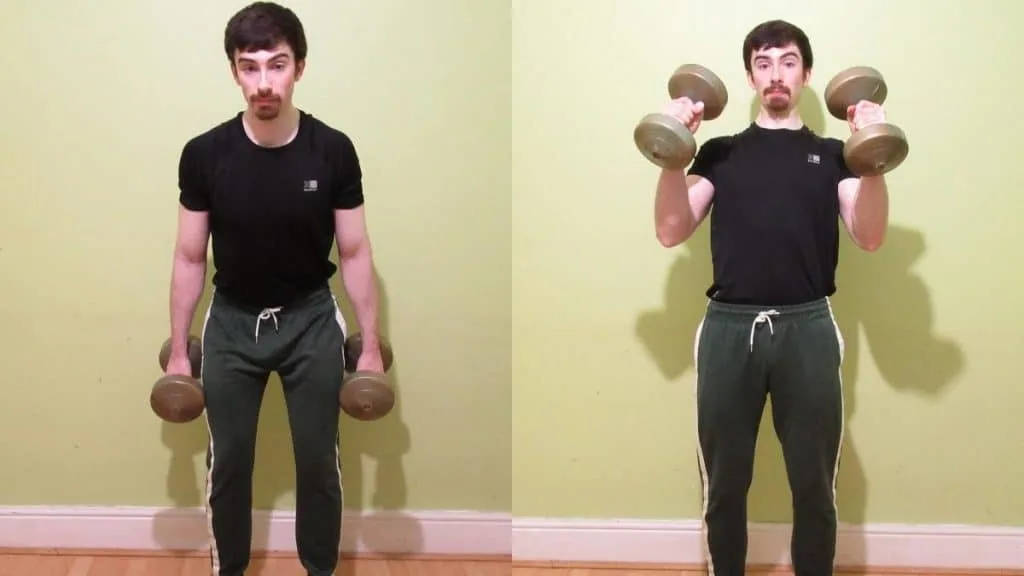
Standing dumbbell hammer curls are one of the most effective exercises for overloading the brachialis and brachioradialis muscles. However, by using some momentum and performing a hammer cheat curl instead, you can place even more resistance onto these two powerful muscles.
Like before, you want to push your hips back and then fling them forward while you curl the weights with your arms. So your brachioradialis and Co are still doing some of the heavy lifting, but they’re getting support from the momentum generated by your hips.
Make sure to pause at the top and lower the weights slowly so that your arms can benefit from the big eccentric stretch. You want to do controlled cheat curls if you’re training for muscle growth because muscles need time under tension (not just “weight”) to grow larger. [1]
Dumbbell cheat curls
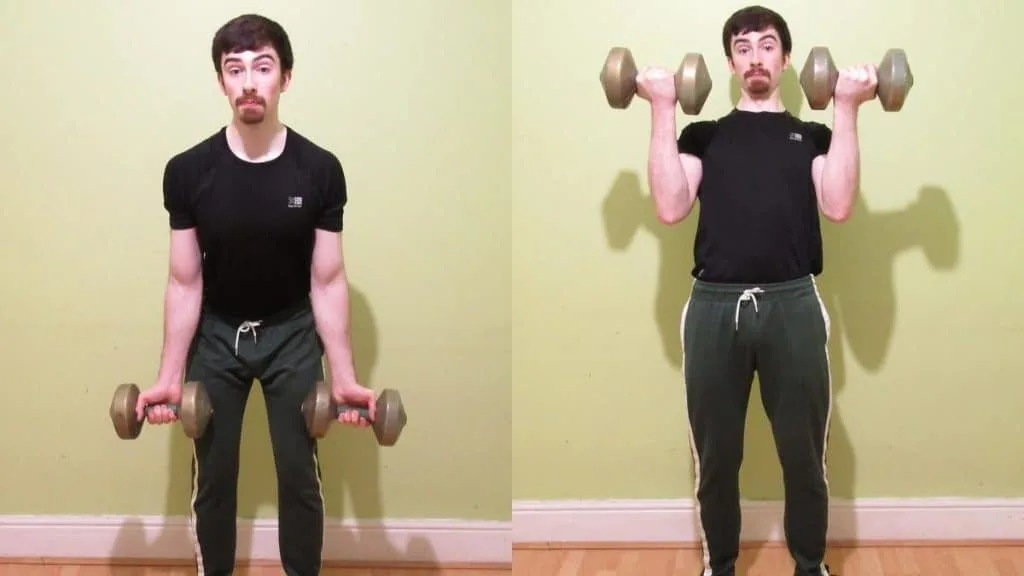
Dumbbell cheat curls are helpful if you have bicep muscular imbalances because you can train each arm independently and ensure that they get equal amounts of work.
The downside to the dumbbell cheat curl is that it’s harder to focus on lifting two weights. So you might get to a point where you’ve successfully lifted one weight with your stronger arm but are still struggling to lift the other weight with your weaker arm, which will throw off your lifting rhythm.
And even if you do Arnold straight bar cheat curls to get around this problem, you open up another one because your stronger arm will dominate the movement when you use a barbell, especially when the weight is already heavier than usual.
Therefore, if you have muscle imbalances, it’s recommended to avoid cheat curls so that you don’t worsen the discrepancies. You should do an exercise like the back against the wall biceps curl instead so that you can more easily focus on the working muscle.
Cheat curls vs strict curls
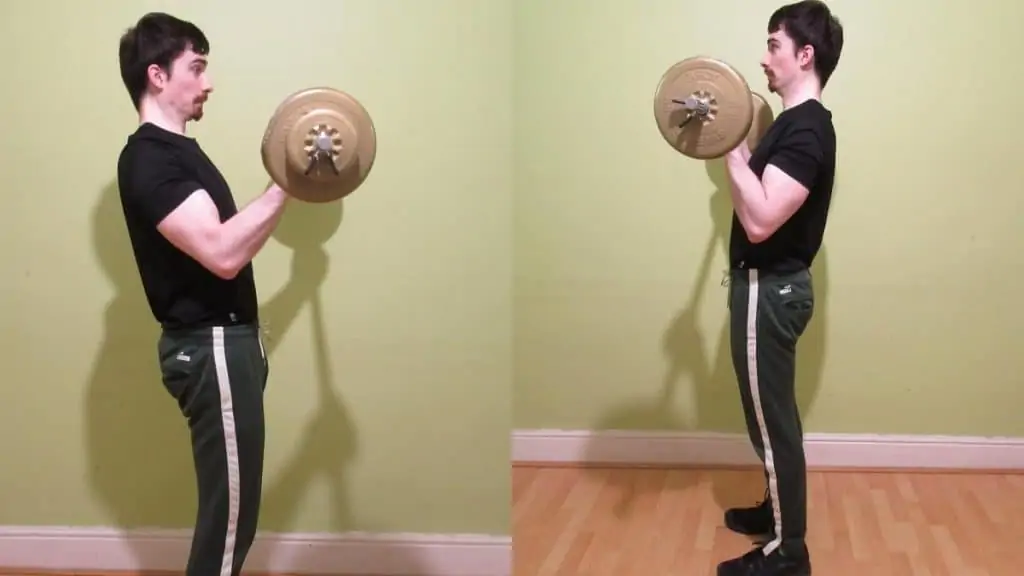
The strict curl involves standing against the wall so that you can’t swing the weight up with your hips or shoulders. So in this regard, it’s the opposite of cheating barbell curls.
While cheat curls certainly enable you to lift heavier weights than strict curls, it’s arguable whether they provide better stimulation overall. Most of the tension during the concentric phase of the rep is getting diverted to the other muscles that you’re using to cheat. The biceps get plenty of work during the eccentric portion of the rep, but it may not make up for their reduced involvement in the lifting phase.
We know that eccentrics are more important than concentrics for muscle growth. [2] But that doesn’t mean that eccentric-only contractions are superior to dynamic (concentric-eccentric) contractions.
As such, if you’re a beginner or intermediate, you should avoid barbell cheat curls altogether. When you don’t have much lifting experience, you want to avoid using the improper form so that it doesn’t carry over into your other exercises.
Similarly, many lifters also fool themselves into thinking they’re gaining more barbell cheat curl strength when really they’re just using more and more extreme forms of cheating, such as leaning back.
Cheat curls FAQ
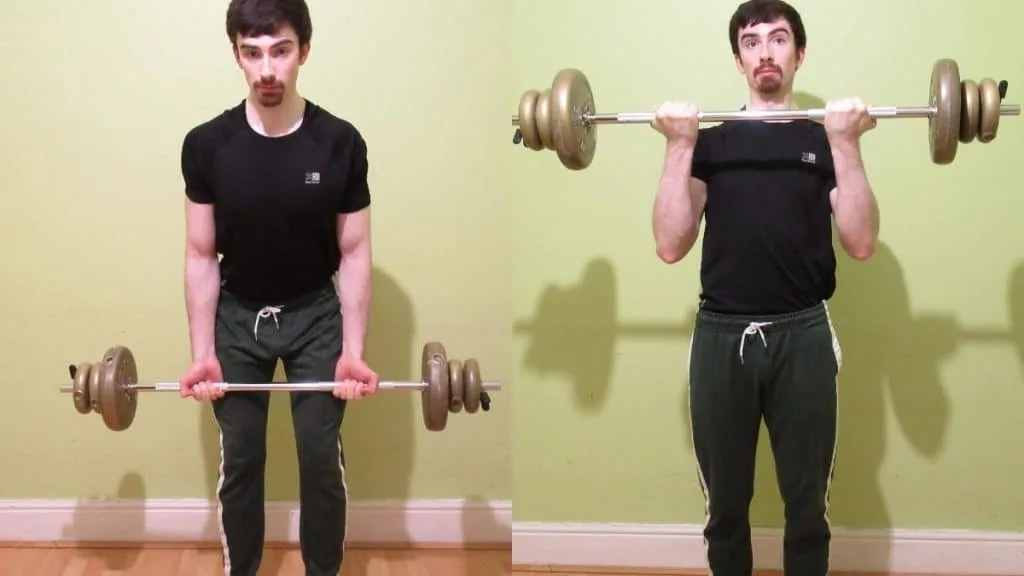
What are cheat curls?
Barbell cheat curls are a bicep exercise that weight lifters and bodybuilders perform to increase the strength and size of their upper arms. The lift is typically performed by the athlete thrusting their hips into the bar to generate momentum and then curling it with their biceps.
Did Arnold do cheat curls?
Yes, Arnold Schwarzenegger did cheat curls with a straight bar and could reportedly lift 275lbs. [3] Arnold was known for his arm development, and there are ample images of him doing cheat curls, which he performed to add mass to his biceps.
Are cheat curls dangerous?
Doing cheat barbell curls can be dangerous if you lean back at the top of the rep (in other words, if you hyperextend your lower back) because this can put an excessive amount of pressure on your spinal erectors. Similarly, lifting more weight than your biceps can handle by themselves could lead to a muscle tear in rare cases.
What are the benefits of cheat curls?
The main benefits of cheat curls are bicep muscle growth and strength development via increased eccentric overloading. Cheat curls also enable you to lift heavier weights than regular curls, which may also improve your training motivation.
Are cheat curls good for mass?
Yes, cheat curls are good for building mass because they overload your biceps with significantly more resistance than usual during the eccentric phase of the rep, which is the part of the rep that’s responsible for stimulating the most amount of muscle fibers.
The verdict: Should you do cheat curls or not?

The barbell cheat curl definitely has its place in a well-programmed workout routine. However, it’s best to avoid the exercise unless you’re an advanced lifter because you could hurt yourself by using an excessive amount of cheating.
While it’s perfectly okay to generate momentum with your hips to get the bar moving, you shouldn’t lean back at the top of the movement because doing so puts a lot of pressure on your spine.
Barbell cheat curls can help to stimulate muscle growth by overloading your biceps with a higher amount of resistance than they’re used to handling. As such, they’re a valuable exercise for bodybuilders who’re seeking to increase their arm size during a bulking phase.
References
- Som, P. P. (2018, December 21). Controlled Cheating! Bodybuilding.Com. https://www.bodybuilding.com/fun/phano54.htm
- Schoenfeld, B. J., Ogborn, D. I., Vigotsky, A. D., Franchi, M. V., & Krieger, J. W. (2017). Hypertrophic Effects of Concentric vs. Eccentric Muscle Actions: A Systematic Review and Meta-analysis. Journal of Strength and Conditioning Research, 31(9), 2599–2608. https://doi.org/10.1519/jsc.0000000000001983
- Harris, R. (2019, May 7). Arnold Schwarzenegger – Back, Arm & Delt Workouts. Muscular Development. https://www.musculardevelopment.com/training/15114-arnold-schwarzenegger-back-arm-delt-workouts.html

